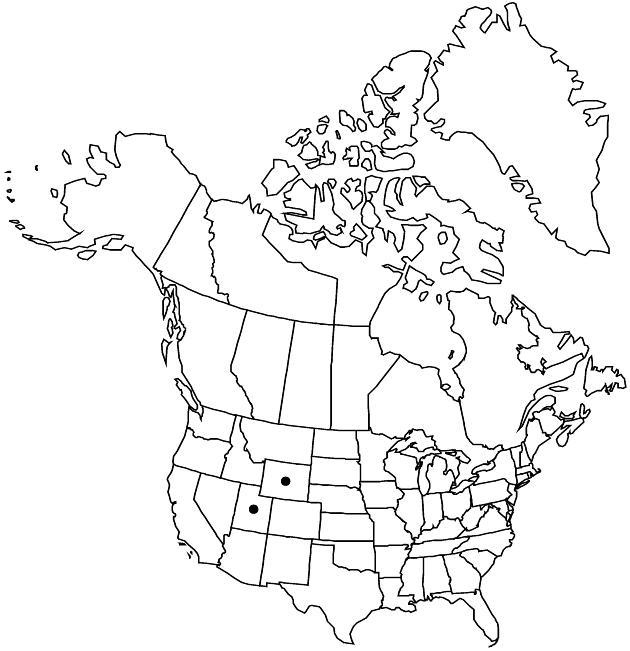Difference between revisions of "Hymenopappus filifolius var. nudipes"
Rhodora 58: 219. 1956.
Endemic
Basionym: Hymenopappus nudipes Maguire Amer. Midl. Naturalist 37: 143. 1947
imported>Volume Importer |
imported>Volume Importer |
||
| Line 55: | Line 55: | ||
|publication year=1956 | |publication year=1956 | ||
|special status=Endemic | |special status=Endemic | ||
| − | |source xml=https:// | + | |source xml=https://bitbucket.org/aafc-mbb/fna-data-curation/src/2e0870ddd59836b60bcf96646a41e87ea5a5943a/coarse_grained_fna_xml/V19-20-21/V21_759.xml |
|tribe=Asteraceae tribe Heliantheae | |tribe=Asteraceae tribe Heliantheae | ||
|subtribe=Asteraceae (tribe Heliantheae) subtribe Hymenopappinae | |subtribe=Asteraceae (tribe Heliantheae) subtribe Hymenopappinae | ||
Latest revision as of 20:14, 5 November 2020
Stems 5–45 cm. Leaves: basal axils glabrous or sparsely tomentose, terminal lobes 6–40 mm; cauline 0–1(–2). Heads 1–12. Peduncles 2–10 cm. Phyllaries 6–10 mm. Florets 10–35; corollas yellowish, 3–5 mm, throats 1.5–2.5 mm, lengths 2–4(–5) times lobes; anthers 2.5–3 mm. Cypselae 4–6 mm, hairs 0.5–1.2 mm; pappi 1.5–2.5 mm. 2n = 34.
Phenology: Flowering Jun–Jul.
Habitat: Sands, gravels, clays
Elevation: 1800–3500 m
Discussion
Selected References
None.
Lower Taxa
None.
